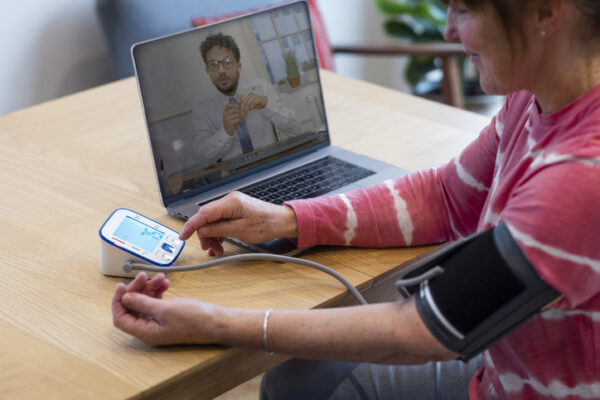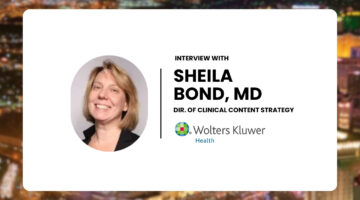
Health care consumers are weary of long waits and care encounters that feel rushed and not at all personal — and it’s manifesting in patient burnout, with patients forgoing needed care to avoid poor experiences and high costs.
It’s a threat to patient access, outcomes and health equity that health care organizations must address if they are to deliver on their mission.
One way to reduce the risk of patient burnout is by leaning into outside nursing support to create experiences patients crave while reducing administrative demands for staff and assisting patients in getting the right level of care when they need it. Recent data suggest nursing executives are open to this support: A panel of nurse executives found three out of four executives expect an increase in virtual nursing labor in the next three years. They viewed the adoption of outside nursing support to complement in-house services as a potentially positive move for nurses and patients.

Integrating GLP-1s: How Berry Street is Redefining Nutrition Care
Richard Fu details the company's approach to nutrition therapy and strategy for patients using GLP-1s.
But crafting the right approach to remote nursing support is key to eliminating patient burnout. Here are three suggestions to consider that could make a difference for patient experience while improving access to care and reducing costs.
- Establish a nurse-first remote triage to help emergency departments (EDs). Providing patients with access to a nurse who can assess their symptoms over the phone and determine where to seek care — and when — is a gamechanger for health systems. That’s especially true when a nurse is the first person patients connect with, rather than having to speak with an administrative assistant first. When patients can depend on one-to-one contact with a nurse when health concerns arise, this establishes a feeling of highly personalized care from the start of the encounter. In instances where an ED visit is needed, the nurse can prep staff for the patient’s arrival. The nurse can also connect with 911 services on the patient’s behalf, if needed. And, when a physician visit is the recommended action, the triage nurse can help make the patient’s appointment and ensure the physician has the information needed for follow-up care. For example, consider a situation where an elderly spouse is unsure whether her partner, who has a complex health condition, needs emergency assistance in the middle of the night. Situations like this are scary not just for those at home, but also loved ones who aren’t certain how to distinguish between a concern that is emergent and one that, unfortunately, might be expected due to the nature of the patient’s condition. Nurse triage can alleviate fears and get patients to the right level of care. There are also times when an employee might face a care need in the middle of a weekday yet hasn’t been able to get a response from their provider. Access to a nurse-first triage line as part of an employee benefits plan can facilitate access to medical advice. This can drive down absenteeism. It can also strengthen relationships between employees and employers by demonstrating that an organization cares about the well-being of its employees.
- Leverage nurse-first triage to meet the needs of vulnerable populations. Among Federally Qualified Health Centers (FQHCs), which treat high volumes of patients with complex needs, access to a nurse by phone or via a telehealth app helps connect individuals with the right care advice at the right time. Many of these individuals can’t afford care from a private practice, hospital or health system, and they depend on these centers for essential services. Telephone-based services like remote nurse triage — including after hours — give patients a care connection in the moment while helping FQHCs avoid bottlenecks with in-person care.
- Explore nurse triage for specialty care. The value of nurse triage extends beyond primary care or urgent care needs. For instance, facilitating maternal health services with telephone nurse triage also could make a difference for underserved families, especially at a time when the Centers for Medicare & Medicaid Services recognizes the need to improve access to maternal health care. Services like this are vital to closing gaps in maternal care at the community level — an area where digital services hold strong potential to make a difference. And when a patient with chronic disease, such as kidney disease, suddenly experiences a new health concern, the ability to talk with a nurse by phone in just minutes can help determine whether the patient should be seen right away and, if so, in what setting. Availability of nurse-first specialty care triage gives these patients the assurance that they don’t have to tackle medical fears or health questions on their own. Ultimately, this nurtures trust between patients and providers.
Patient burnout increases the risk that patients will walk away from a provider. Consequently, health care organizations need a foundation for providing care insight in the moment. Remote nurse-first triage provides practical, informed support that resonates with patients and protects access to care and health outcomes. The ability to build connections for better health and deliver on an organization’s mission depends on it.
Photo: SolStock, Getty Images

Transforming Clinical Content with Ambient & Generative AI
Sheila Bond, MD, talked about the latest trends regarding integration of AI in healthcare.
Cheryl Dalton-Norman, MBA, BSN, RN, is president and co-founder of Conduit Health Partners, an outsource partner that offers customized health care solutions for health systems, health plans, employers and others to improve care and access for their patients and employees. With nearly 40 years of experience serving in various nursing and leadership roles, Cheryl’s wide-ranging expertise was instrumental in the development of Conduit’s innovative solutions, including Transfer Center, 24-7 Nurse Triage/Access, Virtual Care, Health Care Call Center Scheduling and Employer/HR services. Since founding Conduit in 2017, Cheryl has led the company through extraordinary growth, expanding its reach in services from caring for 22,000 people in 2017 to 1.7 million people in 2022.
Cheryl received her Bachelor of Science in Nursing from the University of Tennessee, where she was inducted into Sigma Theta Tau National Nursing Honor Society. She received her Master of Business Administration from St. Joseph College.
This post appears through the MedCity Influencers program. Anyone can publish their perspective on business and innovation in healthcare on MedCity News through MedCity Influencers. Click here to find out how.






